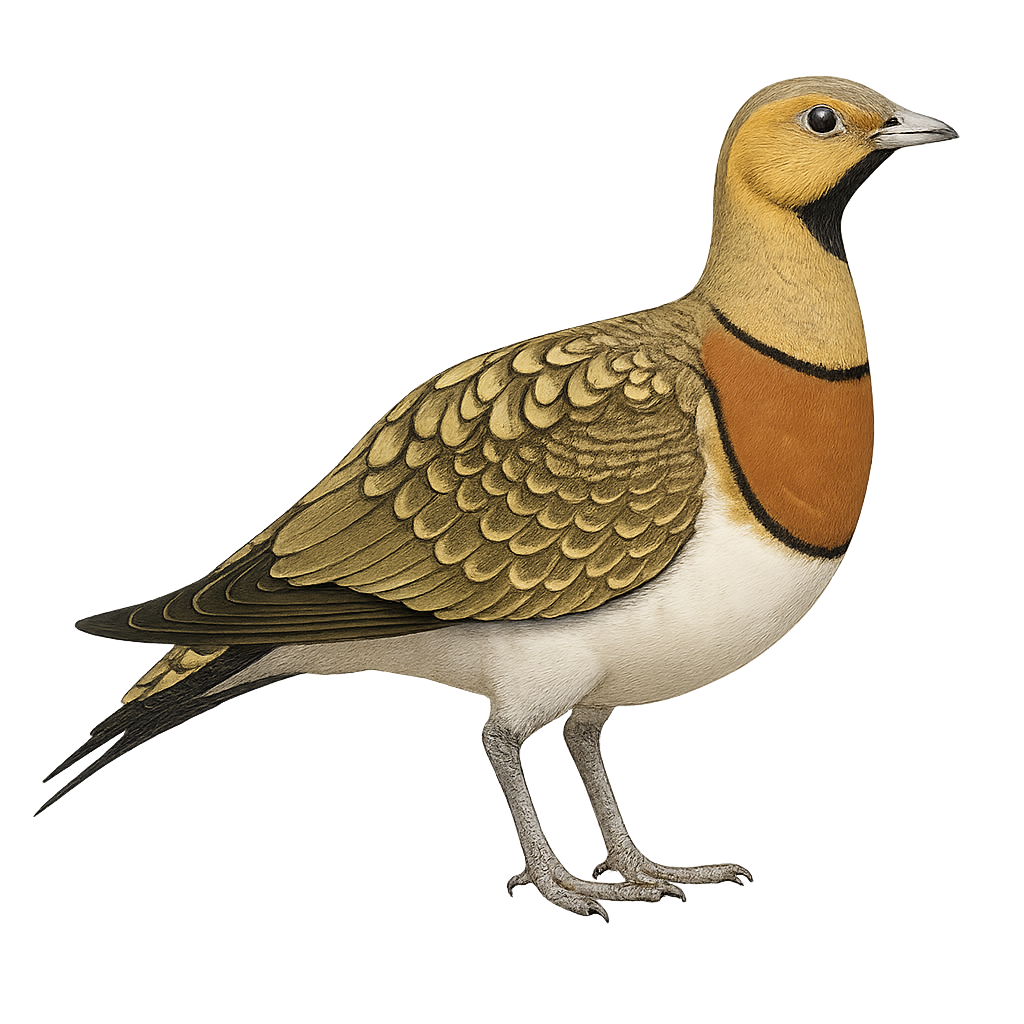Your wildlife photography guide.
Explore the pin-tailed sandgrouse in detail, study its behavior, prepare your shots.
Where to observe and photograph the pin-tailed sandgrouse in the wild
Learn where and when to spot the pin-tailed sandgrouse in the wild, how to identify the species based on distinctive features, and what natural environments it inhabits. The WildlifePhotographer app offers tailored photography tips that reflect the pin-tailed sandgrouse’s behavior, helping you capture better wildlife images. Explore the full species profile for key information including description, habitat, active periods, and approach techniques.
Pin-tailed Sandgrouse
Scientific name: Pterocles alchata

IUCN Status: Least Concern
Family: PTEROCLIDAE
Group: Birds
Sensitivity to human approach: Suspicious
Minimum approach distance: 10 m
Courtship display: April to June
Incubation: 19-21 jours
Hatchings: April to July
Habitat:
Arid zones, semi-deserts, steppes
Activity period :
Primarily active during the day, with peak activity in the morning and late afternoon.
Identification and description:
The Pin-tailed Sandgrouse, or Pterocles alchata, is a medium-sized bird belonging to the Pteroclidae family. It is recognizable by its cryptic plumage, which allows it to blend into its desert environment. Males have more colorful plumage with distinctive patterns on the chest and wings, while females are duller. This bird is primarily granivorous, feeding on seeds found in arid and semi-arid areas. It is often seen in small groups, especially near water sources where it comes to drink. The Pin-tailed Sandgrouse is a partial migrant, moving according to resource availability. It is known for its fast, direct flights, often at low altitudes.
Recommended lens:
400 mm – adjust based on distance, desired framing (portrait or habitat), and approach conditions.
Photography tips:
To photograph the Pin-tailed Sandgrouse, it is advisable to use a telephoto lens of 400 mm or more to capture detailed images without disturbing the bird. Look for water sources where they come to drink, especially early in the morning or late in the afternoon. Be patient and discreet, as these birds are suspicious. Use a tripod to stabilize your camera and wait for the birds to feel comfortable approaching. Take advantage of the soft morning or evening light to get photos with natural contrasts and vivid colors.
The WildlifePhotographer App is coming soon!
Be the first to explore the best nature spots, track rutting seasons, log your observations, and observe more wildlife.
Already 1 430 wildlife lovers subscribed worldwide

